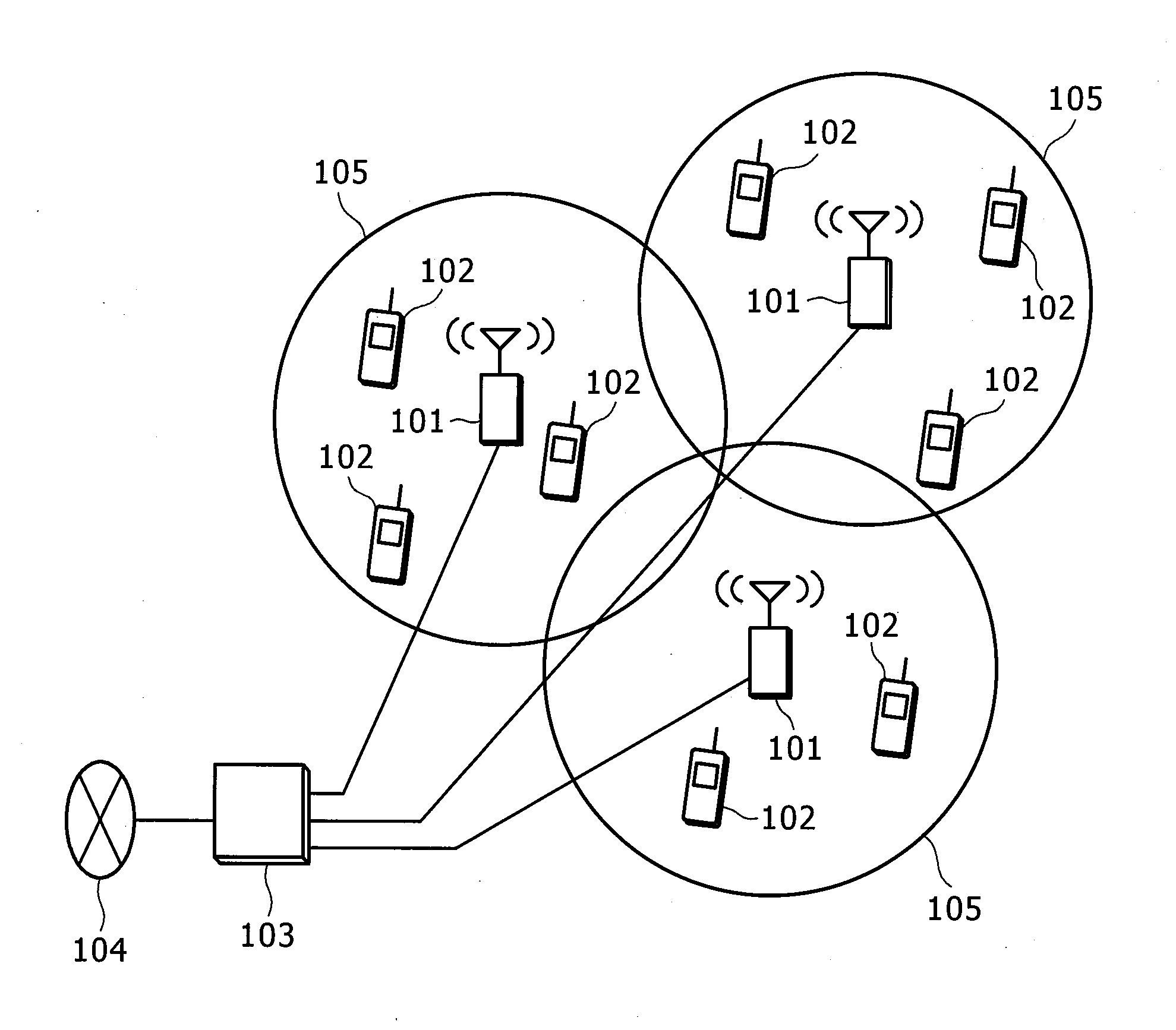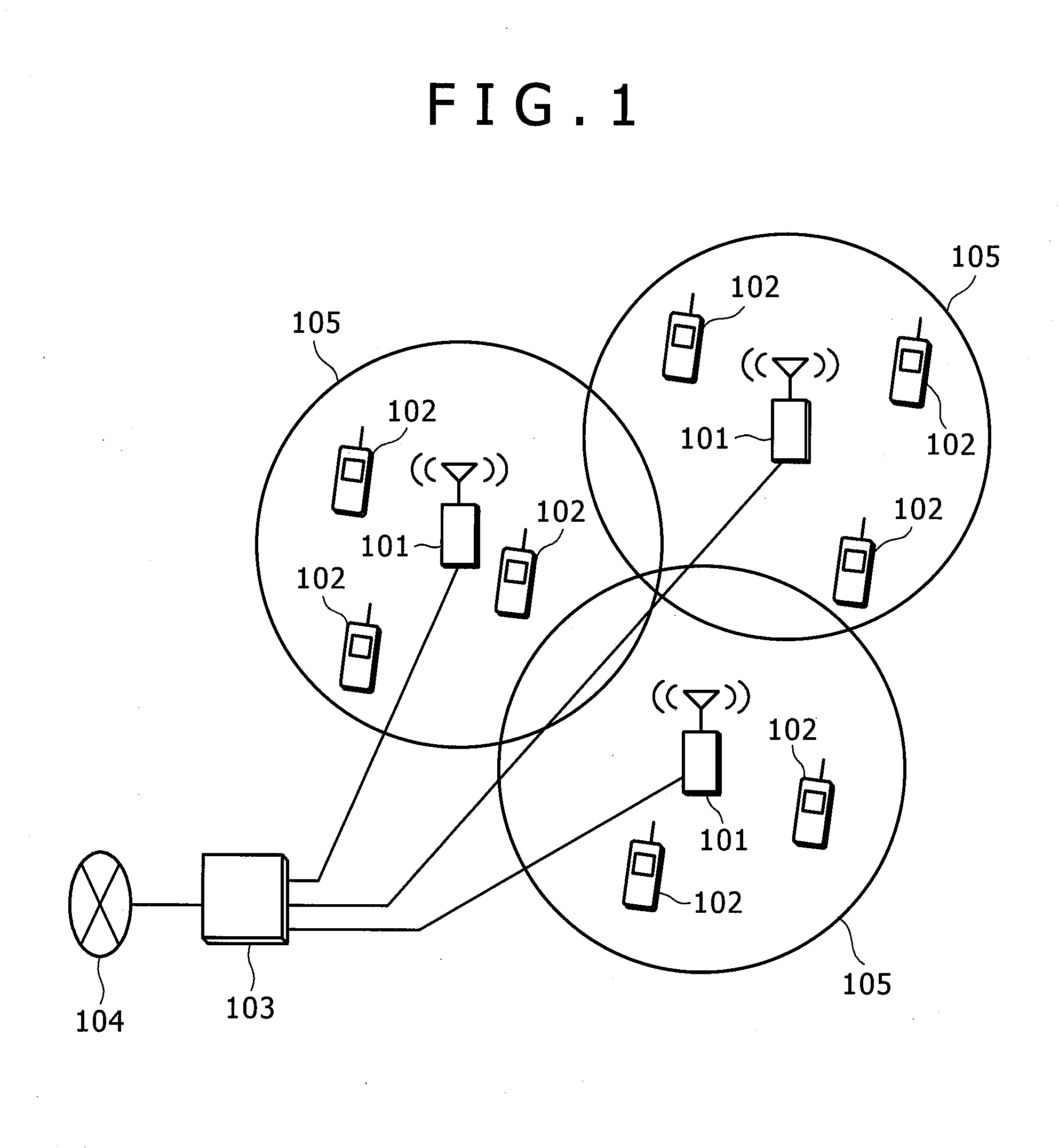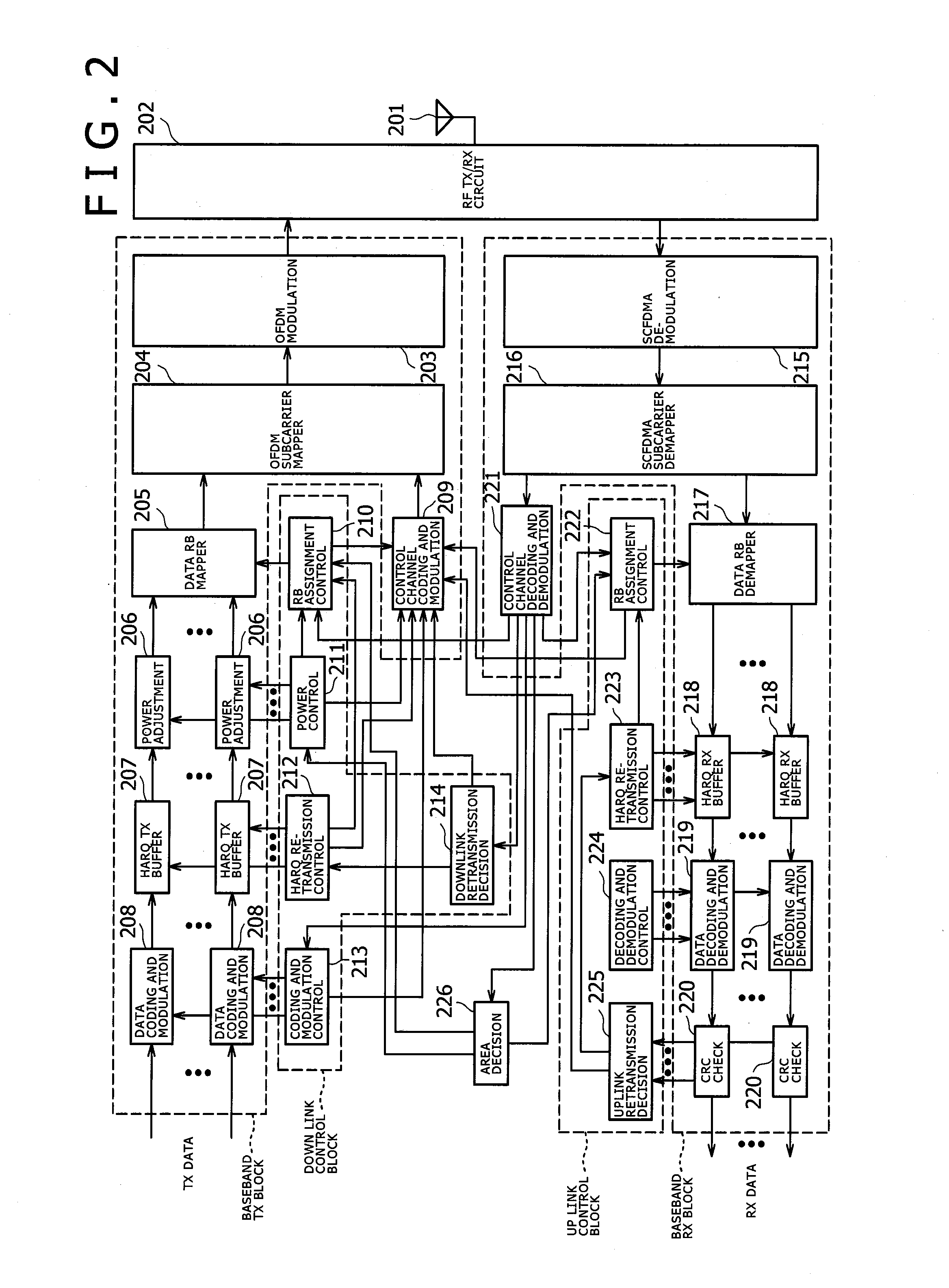Wireless communication system, mobile station , and base station
- Summary
- Abstract
- Description
- Claims
- Application Information
AI Technical Summary
Benefits of technology
Problems solved by technology
Method used
Image
Examples
first embodiment
[0069]The following describes a first embodiment to which the present invention is applied. In the first embodiment, resource assignment of Type 1 is carried out for cell-edge MSs in order to disperse interference by adjusting the interference power from a neighbor BS experienced by the cell-edge MSs in downlinks by appropriate RB assignments, and moreover, to disperse interference affecting MSs communicating with the neighbor BS in the frequency domain.
[0070]FIG. 9 illustrates an example of classifying MSs into the areas. In FIG. 9, as for MSs communicating with a BS eNB1, an MS UE1 is classified into the cell-center area (area 1) and an MS UE2 is classified into the cell-edge area (area 2). As for MSs communicating with a BS eNB2, an MS UE3 is classified into the cell-center area (area 1) and an MS UE4 is classified into the cell-edge area (area 2). The following description assumes that MSs are classified into the areas as in FIG. 9.
[0071]FIG. 10 illustrates an RB assignment proc...
second embodiment
[0074]The following describes a second embodiment to which the present invention is applied. In the second embodiment, resource assignment of Type 1 is carried out for MSs for which transmit power per RB is more than a given value in order to disperse interference caused by RBs with a large transmit power in downlinks.
[0075]FIG. 12 illustrates an RB assignment procedure which is performed at BS in the present embodiment. First, BS divides frequency resources available in the system into resources (Type 1 resources) to be assigned to MSs for which transmit power per RB is large and resources (Type 0 resources) to be assigned to MSs for which transmit power per RB is small. The division of the resources is carried out by reserving one of more RBG subsets as the Type 1 resources (1201). Then, BS performs resource assignment of Type 0 or Type 1, according to the transmit power per RB of each MS 1202. If the transmit power per RB for MS is equal to or more than a preconfigured threshold ...
third embodiment
[0077]The following describes a third embodiment to which the present invention is applied. In the third embodiment, resource assignment of Type 1 that makes it easy to stabilize communication equality is carried out for cell-edge MSs in order to stabilize the communication equality of cell-edge MSs in downlinks.
[0078]The following description assumes that MSs are classified into the areas as in FIG. 9.
[0079]FIG. 14 illustrates an RB assignment procedure which is performed at BS in the present embodiment. First, BS classifies MSs communicating with the BS that executes RB assignment into the plural areas (1401). In the example of FIG. 14, if RSRP signaled from an MS is equal to or more than a predetermined threshold value, BS judges that the distance from the BS to the MS is rather short and classifies the MS into the cell-center area; if the RSRP is less than the threshold value, BS judges that the distance from the BS to the MS is rather long and classifies the MS into the cell-ed...
PUM
 Login to View More
Login to View More Abstract
Description
Claims
Application Information
 Login to View More
Login to View More - R&D
- Intellectual Property
- Life Sciences
- Materials
- Tech Scout
- Unparalleled Data Quality
- Higher Quality Content
- 60% Fewer Hallucinations
Browse by: Latest US Patents, China's latest patents, Technical Efficacy Thesaurus, Application Domain, Technology Topic, Popular Technical Reports.
© 2025 PatSnap. All rights reserved.Legal|Privacy policy|Modern Slavery Act Transparency Statement|Sitemap|About US| Contact US: help@patsnap.com



